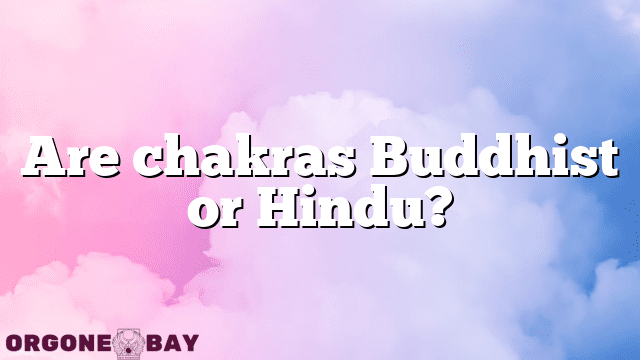Crystal Myths Controversies & Misconceptions
Are chakras Buddhist or Hindu?
Naturally, you may be wondering about the origin of chakras and its relationship to religion. Specifically, you might be asking: Are chakras Buddhist or Hindu? While the concept of chakras is widely associated with these two religions, the truth is that the idea of chakras existed even before the advent of Buddhism and Hinduism.
• The earliest known mention of the chakras is found in the ancient Hindu scriptures, the Vedas.
• However, the Vedas do not describe the chakras in as much detail as later Hindu and Buddhist texts.
• It was only later that the chakras were fully mapped and described in detail in both Buddhism and Hinduism.
• Within Hinduism, the chakra system is most commonly associated with the yoga tradition, particularly the work of Patanjali, the author of the classical yoga text, the Yoga Sutras.
• In Buddhism, the chakras were adopted and incorporated into the Vajrayana Tantric tradition, which emphasizes the use of meditation and visualization to achieve enlightenment.
• While chakras are closely associated with Buddhism and Hinduism, they are not exclusive to these religions. They are a universal concept that can be found in many spiritual and religious traditions around the world.
In conclusion, chakras are not solely Buddhist or Hindu. While these religions have contributed a lot to the development and popularization of the chakra system, the idea of chakras existed before these religions and can be found in other spiritual traditions.
Table Of Contents
- 1 Are Chakras Buddhist or Hindu?
- 1.1 Understanding the Concept of Chakras
- 1.2 The Origins of Chakras
- 1.3 The Connection between Chakras and Hinduism
- 1.4 The Connection between Chakras and Buddhism
- 1.5 Commonalities and Differences between Hindu and Buddhist Chakra Systems
- 1.6 The Role of Chakras in Modern Spirituality
- 1.7 Exploring Chakras in Different Religions and Cultures
Are Chakras Buddhist or Hindu?
Understanding the Concept of Chakras
Chakras are energy centers within the body that are believed to influence physical, mental, and emotional well-being. Each chakra is associated with a specific color, symbol, and corresponding organ or bodily function. The seven main chakras are located along the spinal column, starting at the base of the spine and ending at the crown of the head.
The Origins of Chakras
The concept of chakras is believed to have originated in ancient India, where they were first mentioned in the Vedas, a collection of sacred Hindu texts. The earliest mention of chakras can be traced back to the Upanishads, which are mystical texts that explore the nature of reality and self.
The Connection between Chakras and Hinduism
Chakras are deeply ingrained in Hinduism and are considered an important component of spiritual and physical well-being. Hindu texts describe the chakras as energy centers that correspond to specific deities, elements, and states of consciousness.
The Connection between Chakras and Buddhism
Buddhism also incorporates the concept of chakras into its spiritual practices, although the specific chakra system used in Buddhism differs slightly from that of Hinduism. The Tibetan Buddhist tradition, in particular, emphasizes the use of chakras in meditation and spiritual practice.
Commonalities and Differences between Hindu and Buddhist Chakra Systems
Both Hindu and Buddhist chakra systems recognize seven main chakras, although their corresponding colors, symbols, and associations may differ. Hindu chakras are associated with specific deities, while Buddhist chakras are associated with different elements such as earth, water, or fire.
The Role of Chakras in Modern Spirituality
Chakras have become a popular topic in modern spirituality, with many practitioners incorporating chakra balancing and meditation into their daily routines. However, it is important to note that the concept of chakras may not be accepted or recognized in all spiritual traditions.
Exploring Chakras in Different Religions and Cultures
Although chakras are most commonly associated with Hinduism and Buddhism, similar concepts exist in other spiritual traditions. In Chinese medicine, for example, there are meridians or energy pathways that correspond to different organs and bodily functions. The ancient Egyptians also believed in the existence of energy centers within the body known as sekhem, which were thought to influence physical and spiritual health. While the specific terminology and practices may differ, the underlying concept of energy centers within the body remains a common theme in many spiritual and healing traditions.

